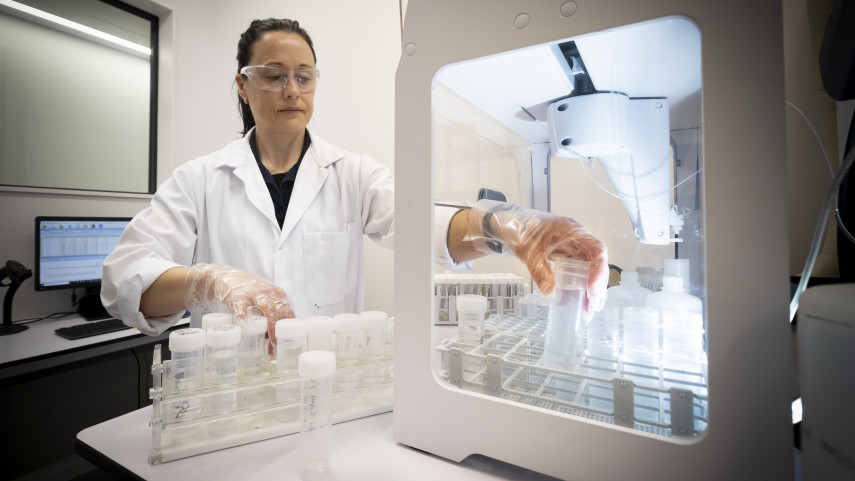
Thousands of samples prove quality of Christchurch water

Share this story
All but one of Christchurch city’s water treatment plants are now fully compliant with national protozoa drinking water rules and standards.
Christchurch City Council has demonstrated Class 1 status for 44 of 46 treatment plants in the Christchurch city and Brooklands Kainga water zones.
Class 1 status is achieved when a water source is drawn from deeper than 30m, the well heads meet the requirements to be considered a sanitary bore, and an intensive sampling programme is completed.
The two treatment plants that can’t achieve this are Tanner Treatment Plant, and Main Pumps. Main Pumps has been compliant since the installation of UV treatment in 2019, and Tanner will be compliant by the end of the year once a UV treatment barrier is installed.
Head of Three Waters Gavin Hutchison says our teams have collected and tested thousands of water samples over the past two years to prove the purity of our water sources.
“A total of 3432 samples were gathered and analysed since the programme began, confirming the quality and safety of Christchurch’s drinking water supply.
“Achieving Class 1 compliance means we’ve avoided the need to install protozoa barriers at almost all of our treatment plants – which represents a big cost saving for our community.”
“This is another win for the city on the heels of promising research commissioned by the Water Services Authority – Taumata Arowai (the Authority), which so far shows no evidence of human viral contamination in our deep bore water.”
“Christchurch’s water supply is unique because it comes from deep aquifers. We’ve always known the risk of both protozoa and viral contamination is low,” Mr Hutchison says.
“With the protozoa risk now effectively ruled out through comprehensive sampling, and promising early research from the Authority showing no signs of human viruses in our deep bore water, we’re well on our way to confirming the overall safety and resilience of our water supply.
“While protozoa and viruses are different types of contaminants, both require careful attention. These findings together give us growing confidence in the natural protection offered by our aquifer system.”
While Christchurch source water is now confirmed as being safe there are still contamination risks within the network of pipes and reservoirs. Because of this chlorination is still required to give a residual disinfection barrier within the network.
On Banks Peninsula water is mostly sourced from streams and requires protozoa treatment. The exceptions are Birdlings Flat and Wainui, where water is sourced from aquifers.
Birdlings Flat already has UV filtration in place, and because the Wainui Treatment Plant bore is shallower than 30m it also requires a protozoa barrier. A UV barrier will be installed at the Wainui Treatment Plant by the end of the year. At that point all Banks Peninsula supplies will have compliant protozoa barriers in place.
What’s the difference between bacteria, protozoa and viruses?
|
Organism |
Examples |
Resistance to chlorine |
|
Bacteria are single-celled microorganisms that can contaminate drinking water and cause illness, particularly gastrointestinal infections. |
E.coli, salmonella, campylobacter |
Poor – easily killed by chlorine. |
|
Protozoa are microscopic organisms that can pose serious health risks when present in water sources. Certain types, such as Giardia and Cryptosporidium, can make people sick. |
Giardia, Cryptosporidium |
High – difficult to kill with chlorine. Many of these organisms are resilient, with some able to survive chlorine disinfection. |
|
Viruses are tiny infectious agents that can enter water sources through sewage or wastewater contamination. Some, like norovirus or adenovirus, can cause severe illness. |
Adenovirus, Influenza, mumps, covid, norovirus |
Moderate – can be killed by chlorine at a high dose / longer contact time. While more resistant than bacteria, many viruses can still be killed by chlorine if used at the correct dose and contact time. |
